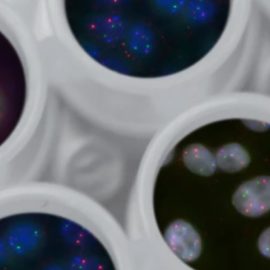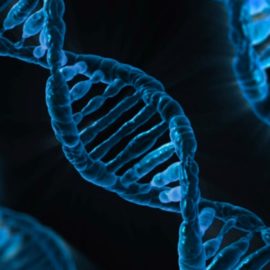

This article is an excerpt from the Shortform book guide to "The Emperor of All Maladies" by Siddhartha Mukherjee. Shortform has the world's best summaries and analyses of books you should be reading.
Like this article? Sign up for a free trial here .
What are the hallmarks of cancer? What are the six characteristics a cell has to possess to be considered cancerous?
The hallmarks of cancer are the qualities that cells have to possess to be diagnosed as cancerous. The original six were proposed by Robert Weinberg and Douglas Hanahan: 1) automatic mitosis, 2) non-responsive to antigrowth signals, 3) “immortality,” 4) limitless replication, 5) self-sustaining, 6) mobility.
Keep reading to learn about the hallmarks of cancer, explained by oncologist Siddhartha Mukherjee.
The 6 Hallmarks of Cancer
In simple terms, cancer is uncontrolled cell division through the process called “mitosis.” Normally mitosis is strictly regulated by biological signals that control when it starts and when it stops, but cancerous cells don’t respond correctly to those signals. As a result, they replicate quickly and endlessly, eventually amassing in a tumor. Cancer is strictly speaking not a single disease, but a type of disease—for instance, lung cancer and leukemia are both cancers, but they have different causes, symptoms, and treatments.
As a disease, cancer was clearly and thoroughly defined for the first time in 1999, when biologists Robert Weinberg and Douglas Hanahan created a list of six qualities that all cancer cells possess—the hallmarks of cancer. Here are the 6 hallmarks of cancer, explained.
- Automatic mitosis. Cancer cells don’t need chemical signals to divide; they’re always “on.”
- Non-responsive to antigrowth signals. Cancer cells do not respond to chemical signals that normally stop cell division.
- “Immortality.” Cancer cells do not respond to chemical signals that normally trigger cell death (called apoptosis).
- Limitless replication. Normal cells can divide a limited number of times; cancer cells bypass this limit, allowing for apparently infinite cell division.
- Self-sustaining. Cancer cells induce nearby blood vessels to grow into the tumor, sustaining the tumor with oxygen and nutrients.
- Mobility. Cancer cells can travel through the bloodstream and attach to other areas of the body (this is called metastasis).
| Refining the Definition of Cancer Although Weinberg and Hanahan aimed to provide clear guidelines for recognizing and understanding cancer, their list wasn’t comprehensive. For example, the National Cancer Institute now recognizes several other qualities of cancer cells that Weinberg and Hanahan’s list didn’t include: – Invade other tissue types. Most cells stop dividing when they encounter other types of cells—for example, bone cells don’t normally try to grow into and through muscle tissue—but cancer cells invade any body part they encounter. – Manipulate the immune system. The body’s immune system normally finds and kills abnormal cells, but some cancerous cells can hide from it; in some cases, they can even trick the immune system into protecting a tumor rather than destroying it. – Use different nutrients and chemical pathways. Cancer cells don’t rely on the same nutrients as normal cells—for example, while the amino acid glutamine is a preferred energy source for all types of cells, cancer cells can substitute several different amino acids for it, making them less reliant on that particular nutrient. Furthermore, cancer cells often process those nutrients differently and more quickly than healthy cells, allowing them to grow and multiply more quickly. |

———End of Preview———
Like what you just read? Read the rest of the world's best book summary and analysis of Siddhartha Mukherjee's "The Emperor of All Maladies" at Shortform .
Here's what you'll find in our full The Emperor of All Maladies summary :
- An overview and rough timeline of the fight against cancer
- A look into the more technical aspects of cancer and cancer treatment
- The social aspects of the fight against cancer






